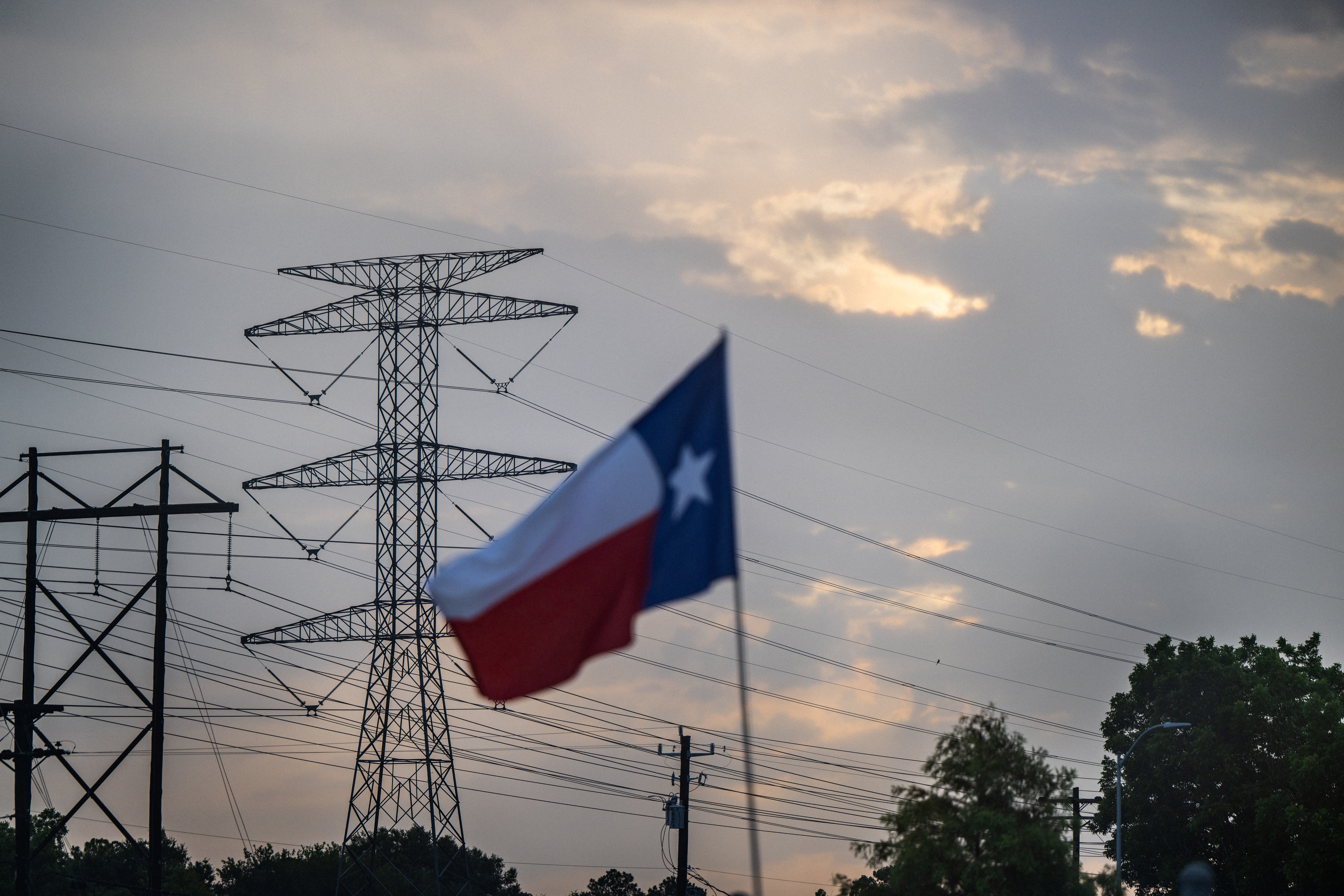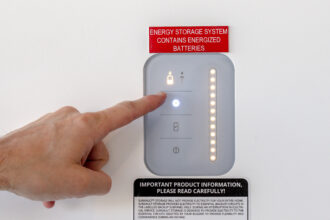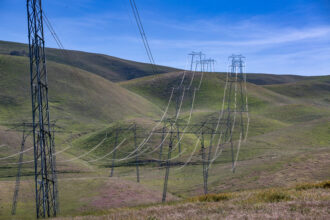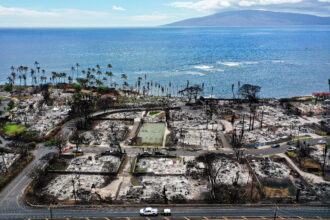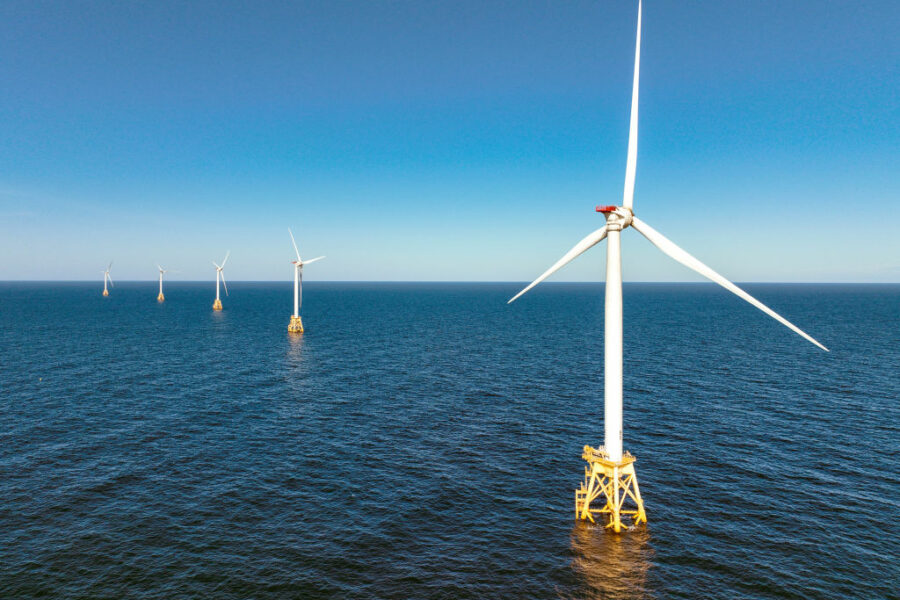An August wildfire cut off electricity to Del Norte County, California. Residents might have been in the dark for weeks—except for the use of a makeshift microgrid that generated power locally.
The diesel generators wouldn’t be confused with clean energy, and the thrown-together nature of the effort was far from a permanent installation. But the situation in this northwest California county highlights how microgrids could and should be an important part of our energy landscape.
And, with some planning, microgrids could be generating clean energy.
The case for microgrids is clear, but companies that try to develop the projects have run into a discouraging array of obstacles, as shown in a recent report from Think Microgrid, a trade group for companies involved with these technologies.
The report, which includes a state-by-state report card, explains that much of the country has little support for microgrids, but I think the authors pulled their punches in their criticism of the places with some of the most problems.
But before we go on, I need to answer a basic question: What is a microgrid?
A microgrid is a localized energy system that can operate in conjunction with the larger grid or independent of it. Examples may include systems that serve housing developments, military bases, school campuses and medical complexes.
Clean energy advocates tend to focus on microgrids that use rooftop solar combined with battery storage. But microgrids also can run on fossil fuels, or a mix of resources.
Microgrids are here already, with several thousand U.S. projects, including 329 completed last year, according to the research firm Wood Mackenzie. The operational projects have about 8 gigawatts of capacity and another 2.5 gigawatts are in some phase of development. Texas, California, Florida and Alaska are among the states with the most projects.
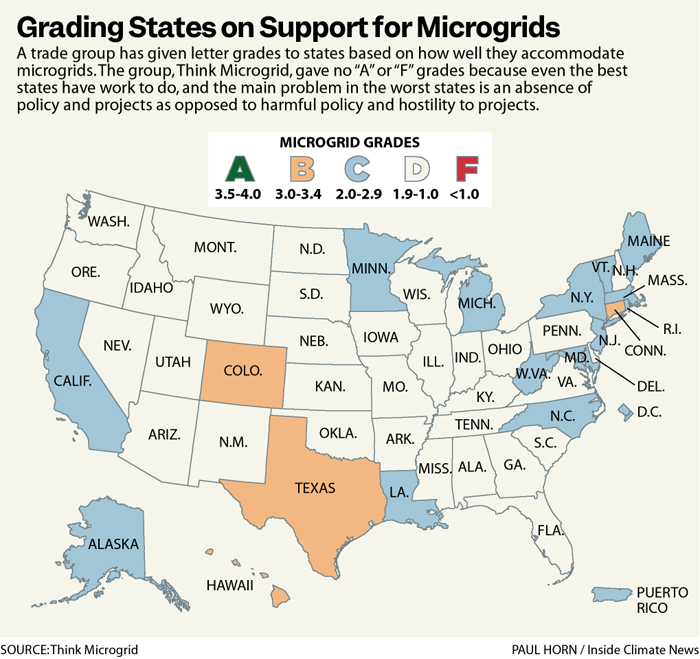
No states got “A” grades and none got “F” grades in the report. The leaders, with “B” grades, are Colorado, Connecticut, Hawaii and Texas. Sixteen states got “C” grades, including California. The rest—a majority of states—got “D” grades.
California stands out for me, since it leads the country in rooftop solar and battery storage and is home to many companies that install these resources. The state also has a severely strained grid and reliability concerns related to wildfires.
This environment is practically begging for microgrids.
But some high-profile attempts to build microgrids in California have been rejected by regulators, often due to opposition from utilities or utility-friendly groups. Inside Climate News wrote about one example this year in which the rooftop solar company Sunnova applied to be certified as a “micro utility” so it could work with builders on housing developments that would produce their own electricity and be able to operate on their own when the regional grid wasn’t working.
The California Public Utilities Commission rejected the application, saying Sunnova didn’t provide enough details, and critics of the plan said Sunnova was ill-equipped to oversee a utility-like framework.
I asked Cameron Brooks, Think Microgrid’s executive director, how to make sense of California being a leader in clean energy but falling short when it comes to microgrids.
“It’s very true that California has done a lot about clean energy, about carbon reduction overall, and energy efficiency, and most of those have been done, I would say, at the bulk power level,” he said. “That’s all good and there’s nothing wrong with that, but it does not address the unique challenges of what it takes to integrate distributed energy and take advantage of that, and that’s an area that I think California is really falling down.”
When he talks about distributed energy, he means customer-owned resources like rooftop solar and battery storage.
If Del Norte County had developed microgrid projects before the August fire and power outage, it could have saved on the expense and emissions of using diesel generators. The Los Angeles Times wrote about the outage and the response, including that each generator used about 47,000 gallons of diesel every 24 hours.
Keep Environmental Journalism Alive
ICN provides award-winning climate coverage free of charge and advertising. We rely on donations from readers like you to keep going.
Donate NowMeghan Nutting, executive vice president of government and regulatory affairs at Sunnova, a Think Microgrid member, said microgrid developers are often frustrated.
“Our system is set up in such a way that stymies innovation (and) technology adoption,” she said.
The California commission ruling this year was especially frustrating, she said, because Sunnova would have liked to continue the discussion and work out any concerns, but the process didn’t allow for that.
The Inflation Reduction Act includes tax credits that apply to equipment and other expenses used to develop microgrids, but Wood Mackenzie has not yet seen evidence that the 2022 law is leading to an increase in projects.
The Think Microgrid report is the first analysis of this type done by the organization, which the authors hope will make people ask questions about the options and regulations on their states.
One of my main takeaways from the report is that a majority of states are indifferent to microgrids, but there are signs of progress in some places.
Two examples:
- Maine passed a microgrid law in 2021, defining them as separate from public utilities and providing a framework for project applications that meet the standards for regulatory approval.
- Texas passed a law this year to create a $1.8 billion grant program that can help pay for microgrids among other projects that promote grid resilience. The projects can run on solar and batteries, and also on natural gas and propane, so this isn’t necessarily a clean energy initiative.
But those highlights are easy to miss, considering the inaction in most states.
Brooks said that all the “D” grades are a way of indicating that many states are doing little or nothing. To get an “F,” which nobody got, a state would need to be purposefully hostile to microgrids.
There is an opening for state, local and tribal governments to help foster innovation in this space. The rewards—cleaner and more reliable electricity—would be substantial.
Other stories about the energy transition to take note of this week:
Report Charts Climate Change’s Growing Impact in the U.S., While Stressing Benefits of Action: The Biden administration issued a sprawling report on the effects of climate change and what needs to be done to mitigate the risks, as reported by my colleagues Marianne Lavelle, Katie Surma, Kiley Price and Nicholas Kusnetz. For people interested in the clean energy economy, the report goes into detail about the economic benefits of the transition away from fossil fuels. The report, the Fifth National Climate Assessment, was released with fanfare, a notable contrast with the previous edition under the Trump administration, which was released quietly over Thanksgiving weekend.
Wind and Solar Energy Are Booming in Fossil Fuel Communities: A new analysis shows that communities with past or current connections to fossil fuel industries are getting a disproportionately large share of incentives under the Inflation Reduction Act, as Shannon Osaka reports for The Washington Post. This is no accident, since the law gives extra incentives to communities that meet the criteria to be designated as “energy communities,” a provision that was designed to help the people and places most likely to see negative economic consequences from the transition to clean energy. The report, from Rhodium Group and MIT’s Center for Energy and Environmental Policy Research, indicates that this aspect of the law is working as intended.
The First Small-Scale Nuclear Plant in the U.S. Died Before It Could Live: People who have long argued that small modular reactors are the future of nuclear power are now dealing with the cancellation of a project that was going to herald the beginning of this new era. The NuScale power plant project in Utah was a casualty of cost overruns and ongoing concerns from some of the local utilities that had signed on to buy the electricity. While the project is dead, NuScale, the company, continues to work on its technology and may have a head start on competitors from having gotten so close to deployment, as Gregory Barber reports for Wired.
Sizing Up Manchin’s Legacy on Energy and Climate Policy: U.S. Sen. Joe Manchin (D-West Virginia) said last week that he is not running for re-election, which increases the chances of Republicans winning his seat and retaking control of the Senate. Manchin has a complex legacy on energy, as Timothy Cama reports for E&E News. Manchin is a leading supporter of coal and other fossil fuels, but also was co-sponsor of the Inflation Reduction Act, the largest climate and clean energy law in the country’s history.
The Humble Trash Truck Is Ready for an All-Electric Upgrade: A super-size electric vehicle can now be seen on the streets of Portland, Orgegon. The trash truck is a Peterbilt Model 520EV, operated by a local trash disposal and recycling company. There is a strong case for electric trash trucks because of the benefits of reduced noise and pollution, as Maria Gallucci reports for Canary Media. But this market is just getting started, with only 48 zero-emissions refuse trucks operating in the United States.
Corruption and Rights Abuses Are Flourishing in Lithium Mining Across Africa: A new report from the nonprofit Global Witness validates civil society groups’ concerns about exploitative labor practices and environmental destruction associated with lithium mining, as my colleague Katie Surma reports. The report shows alleged incidents of corruption, unsafe working conditions, forced evictions, child labor and harmful environmental practices tied to lithium mining in Zimbabwe, Namibia and the Democratic Republic of Congo. Concerns about labor issues in the lithium supply chain are likely to grow along with demand for electric vehicles, which depend on lithium-ion batteries. Some companies are developing alternatives to lithium. At the same time, the United States is working to expand lithium production within the country.
Inside Clean Energy is ICN’s weekly bulletin of news and analysis about the energy transition. Send news tips and questions to [email protected].







